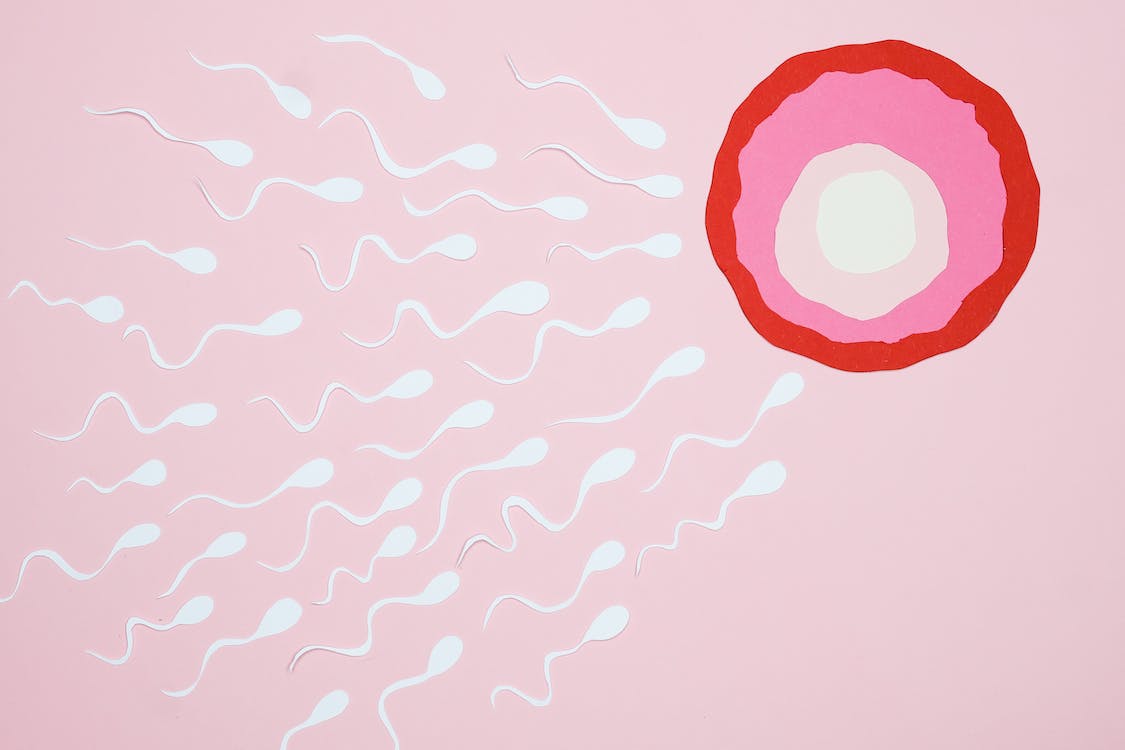
Fertility & Conception
|
4 min
|
4 min
Each month, the body goes through four phases, creating a cascade of hormonal changes. The hypothalamus and pituitary gland release different hormones supporting the development of the follicles released, preparing the uterine lining for pregnancy, and continuing to regulate the increase and decrease of hormones.
Did you know that a woman is born with all the eggs she will have for her lifetime?
When gonadotropin-releasing hormone(GnRH) is produced in the hypothalamus during the first few days of the ovulation cycle, the pituitary is stimulated and makes follicle-stimulating hormone. As the follicles mature and produce more estrogen, the lining of the uterus begins to thicken. When the follicle is mature, and the pituitary releases luteinizing hormone, ovulation happens within two days later.
During pregnancy, the dramatic increase in hormones plays a role in the morning sickness some people experience and is also supporting the placenta and the growing fetus. The rise in progesterone and estrogen is also responsible for creating the neurotransmitters dopamine and serotonin, which is what makes you feel better after those first few weeks. Dopamine and serotonin make you feel happy and calm.
After birth, your hormones have another dramatic shift. When the placenta is delivered, progesterone and estrogen drop significantly as there is a surge in prolactin and oxytocin. Oxytocin is the “feel good” or “love” hormone. It helps compensate for the drop in progesterone happening immediately after birth. Prolactin is the milk-making hormone. The rise in prolactin signals to start the milk-making, and around days 2-4, your colostrum, high in protein and fat, will transition to milk that increases in volume and has more carbohydrates.
Breastfeeding delays the onset of ovulation and the return of menses. This phenomenon, known as lactational amenorrhea (LAM), can last varying amounts of time depending on your hormone status as well as how breastfeeding is practiced. For a mother who is not breastfeeding, ovulation will occur about 6-8 weeks postpartum. (1)
Lactational Amenorrhea is nature’s method of natural child spacing and is used as a form of birth control. To delay the onset of menstruation and ovulation longer:
Before your baby is six months old, if you have not had your period return and you are doing the practices mentioned above, breastfeeding has been shown to be 98-99.5% effective in preventing pregnancy (4) and can delay the return of fertility up to 2 years.
Working moms who pump for their babies can still follow the practices to delay the return of their period and ovulation, but it is less effective if you are using that for your method of birth control. One study found that people who pumped to give their baby 100% breastmilk had a slightly higher rate (5.2%) of pregnancy risk in the first six months. (3)
Delaying the return of menstruation and ovulation allows moms to take their time deciding on what form of birth control they might like to use when the time comes. Some methods of birth control can interfere with breastfeeding. Many moms experience a dip in their milk supply that can be hard to recover. (5) Birth control pills deplete nutrients in the body that are very important to healthy lactation and milk supply, including B vitamins, folate, zinc, vitamin C, and magnesium. Because of the many complications that can happen from many forms of birth control, some women decide to begin to follow their own body’s signals to track their fertility.
When menstruation and ovulation return, some women experience a dip in their milk supply. If you are feeding on demand, you may just notice a slight increase in the number of times your baby wants to nurse, and in a couple of days, things return to normal.
If a dip in your supply is disruptive to breastfeeding, it can be helpful to take a good quality calcium magnesium supplement beginning after ovulation, before your period begins, and during the first few days of bleeding. (6)
A dip in calcium levels in the blood can be the reason for the lowered milk supply. It is important to remember that your baby's nursing frequently continues to signal to make more milk. Less full breasts fill faster, and fuller breasts fill with milk more slowly.
Getting pregnant will lower the milk supply. It is possible and usually safe to continue nursing during your pregnancy. Milk may change by tasting more salty than sweet, which some children don’t mind. You can always talk with your IBCLC (International Board Certified Lactation Consultant) about any questions you have about nursing through your pregnancy and the plan for after your baby is born. There are many benefits to nursing an older child. (7)
https://www.fertilityanswers.com/female-infertility/hormone-cycle/
https://www.factsaboutfertility.org/an-overview-of-lactational-amenorrhea-and-fertility/
https://www.parentingscience.com/newborn-feeding-schedule.html
https://www.parentingscience.com/infant-feeding-schedule.html